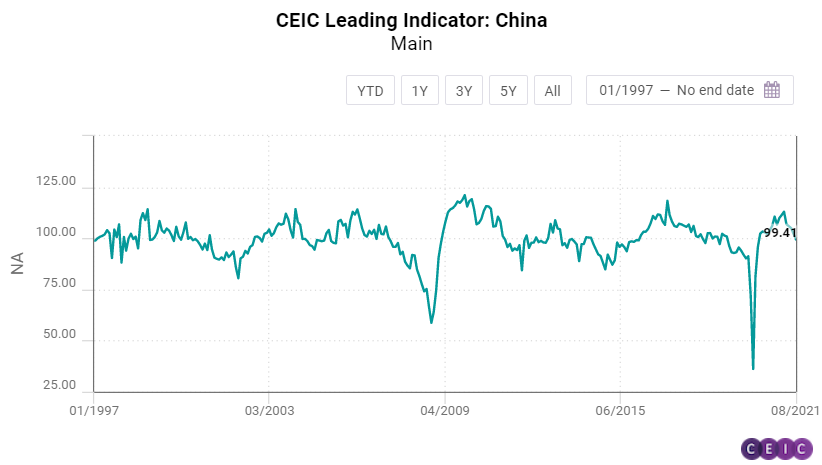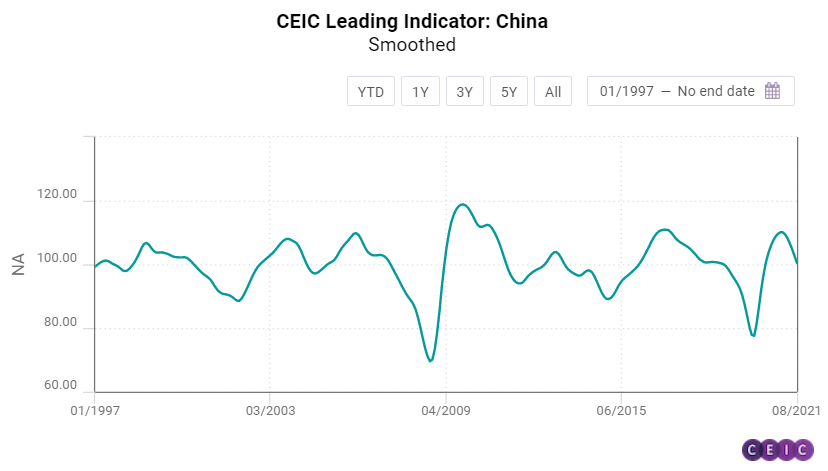
The Delta variant of the coronavirus and policy crackdown on property sales have weighed on China’s economic recovery, according to the CEIC Leading Indicator, which anticipates turning points of the business cycle.
The CEIC Leading Indicator for China declined for the fifth month in a row in August to 99.4, dropping below the long-term average of 100 for the first time since April 2020 and worsening the growth outlook for the rest of the year as well as Q1 2022.

China’s official manufacturing PMI dropped further to 50.1 in August from 50.4 in July, marking the fifth consecutive month of decline and suggesting a deterioration in the manufacturing sector mainly due to the resurgence of the COVID-19 virus. Automobile production declined by 18.6% y/y in August as the industry continued to suffer from chip shortages. Growth of money supply decelerated, increasing by 8.2% y/y in August from 8.3% in the previous month, the slowest growth rate since April 2021. The expansion of financial institution deposits also slowed down to 8.3% y/y from 8.6% y/y in July. Affected by tighter regulations, China’s real estate sector continued to cool down, as floor space sold of commodity buildings in the period January-August 2021 increased by 16% y/y compared to 21.5% y/y growth in the period January-July 2021.

The smoothed CEIC Leading Indicator fell to 100.4 in August from 102.6 in July, dropping close to the threshold of 100. A value above 100 suggests that the country is still performing above the long-term average, but the economic rebound might be short-lived.
Keep informed each month on the predicted turning points of the economic cycle for key markets with our free, proprietary CEIC Leading Indicator. Learn more and register here.
.png?width=160&name=ceic-logo-Vector%20logo%20no%20tagline%20(002).png)
